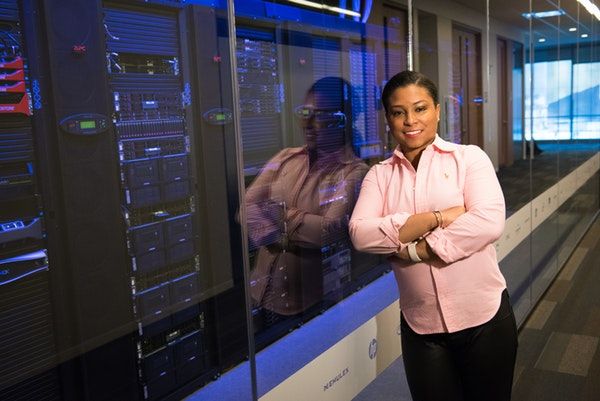
Why Colocation Providers Should Be Open Compute Project-Ready
March 12, 2019
Tips for Getting the Most from a Cybersecurity Assessment
March 19, 2019Data center obsolescence is a limit to business growth: according to IDC, the average age of data centers is nine years, while Gartner claims that any site that’s 7 and more years old can be considered obsolete.
A data center expansion projects must, therefore, be designed in a forward-looking perspective so that the infrastructures are able to evolve simultaneously and support the needs of business in progress. A holistic and structured approach is the basis of any data center design and construction process devoid of the most common errors.
Mistake #1
First of all, an underestimation of the TCO (Total cost of ownership): concentrating on capital costs, excluding operating and maintenance costs (OpEx) and energy costs. That can mislead and not allow you to do an adequate calculation of the ROI (Return on investments).
Mistake #2
The second error is represented by an imprecise estimate of the realization costs: often after having submitted and approved a summary budget request, the second more detailed calculation highlights the impracticability of the project which is then postponed.
Mistake #3
The third mistake concerns the inadequate definition of the design criteria of performance characteristics: the greatest danger is oversizing (infrastructure more powerful than your real needs), which leads to an unjustified increase in costs.

Mistakes #4 and #5
The choice of the site before the definition of the design criteria is the fourth risk (never look for the space for the data center before defining the design aspects: it may not be suitable for the requirements). Even premature planning of space (fifth error) can jeopardize the effectiveness of the project.
Mistake #6
Despite that flexibility and scalability are considered central in the design of a data center, a modular approach tout court only for IT technologies may not guarantee a satisfactory result in the long term; to avoid unknown territory (error number 6), it is necessary to act according to the principles of flexibility also on the electric front (possibility to add continuity groups to existing modules and input and output distribution systems able to withstand future performance and computational needs) and from the mechanical point of view (capacity to increase scalable cooling systems without interruption).
Mistake #7
The seventh error concerns a wrong consideration of the level of energy efficiency: in this sense, the PUE (power usage effectiveness) can be an excellent indicator, but must be interpreted in relation to ROI and TCO in order not to compromise the global operational objectives (attention to how and under what circumstances the PUE is calculated, as well as the capital and operating costs of certain high-efficiency technologies).
Mistake #8
Unclear ideas about LEED (a certification program, now voluntary applied in key areas and related to the sustainability of buildings throughout the life cycle) represent the error number 8: people often don’t have the basic skills and knowledge concerning the qualification criteria; moreover, it is not considered that a certification path involves costs that must be included in the TCO.

Mistake #9
Frequently, we forget that simplicity must be the guiding criterion in the creation of a data center, and sometimes too complicated projects (error 9) come to life, involving an increase in costs and components, as well as the mismatch of business objectives.
What begins well, ends well
How to avoid the most serious errors in the design of the physical infrastructure of a data center? It is a good step forward to apply a well-defined methodology right from the system planning stage, a process that companies still perceive as difficult and challenging. It is often performed according to an unstructured and unscientific approach.
The errors accumulated at this stage have repercussions with serious consequences in the successive stages of the project. However, risks can be reduced and, in many cases, eliminated by designing system planning as a standardized data flow model, consisting of an efficient and orderly sequence of activities that develop and refine the step-by-step project (each step built on the basis of previously defined information, enriching it and ensuring the transition to the next level) up to the final solution, meeting the initial needs.
The “system planning sequence,” in short, is the logical flow of thought, activity, and data (less and less abstract and dependent on the human ability to analyze and decide, but gradually more detailed and automated, derived from standards and software tools) that transforms the initial idea of the project into a detailed installation plan.
In the framework proposed, this sequence is subdivided into five acts that take place during the initial phases of Preparation and Design within the process for the creation of a data center (according to the vendor model, the subsequent stages, which refer to the Construction, concern procurement, and implementation).
Planning begins with the determination of the IT parameters, which allow quantifying the extent of the project to improve or add resources and information capabilities.
The first criterion is strategic. It determines the importance of the operation of the data center for the company (i.e., the tolerance of downtime) on the basis of a numerical scale from 1 to 4.
The second parameter is the capacity, or the maximum rated load capacity for the data center, for the entire period of activity.
The growth plan, as the last criterion, determines the expected growth of the IT load expressed in kW.
The second activity consists in identifying the best way to develop the infrastructure (development of the concept of the system) through the use of a library of reference designs to choose from on the basis of the parameters IT.
We hope that with these mistakes laid out, you will plan your data center in a better manner.

